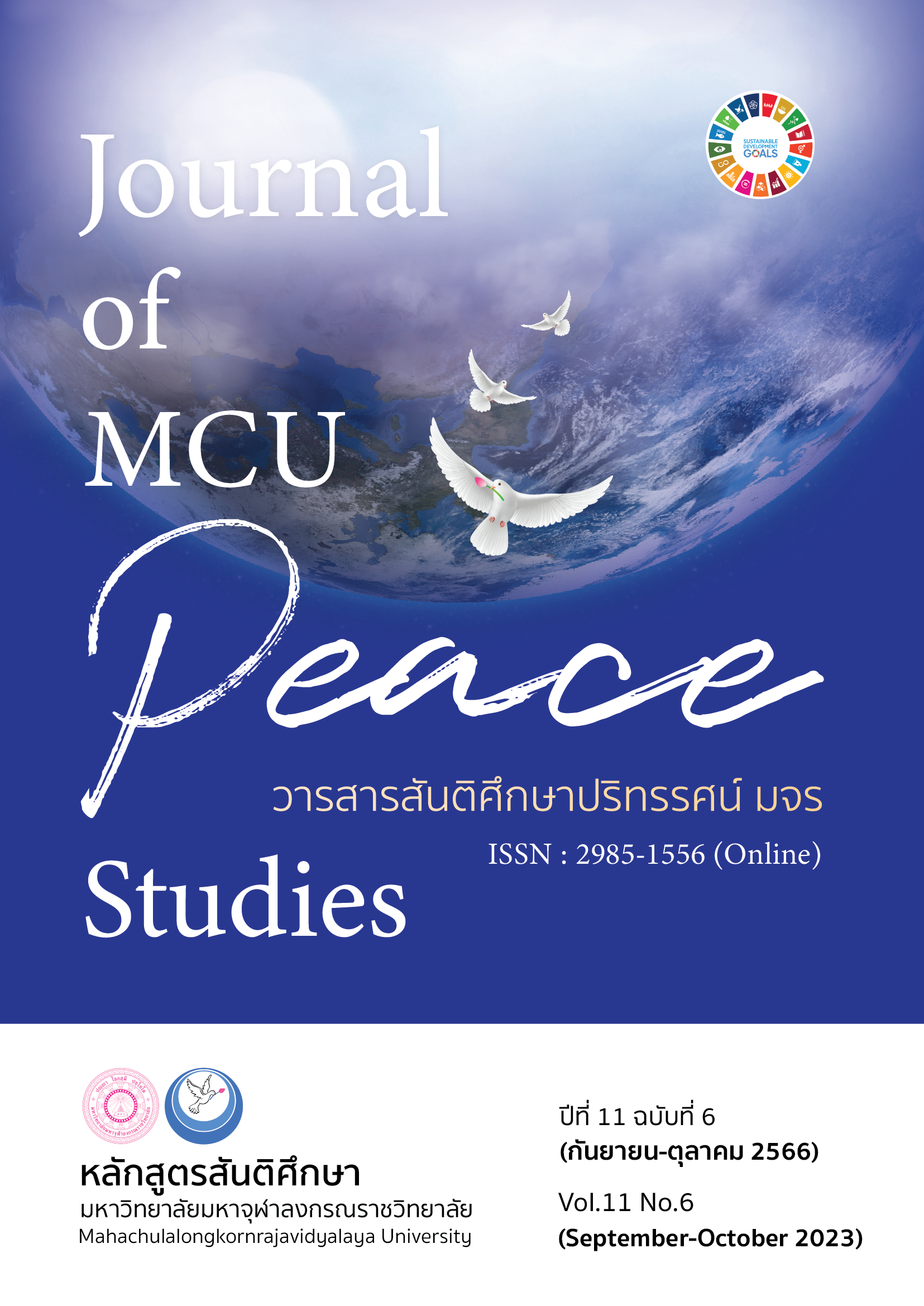The Effects of Learning Management Using the Bar Model on the Ability to Solve Mathematical Problems in the First Secondary School Students
Main Article Content
Abstract
The research article aimed at investigating the ability to solve mathematical problems after the use of bar model for the first secondary school students. The study employed quasi-experimental research. The sample group consisted of nine students from the first secondary school who were in the second semester of the academic year 2021. Cluster sampling was used to select the sample group, with the school serving as the sampling unit. Research instruments included: 1) 8 learning management plans based on linear equations in one variable using the bar model; and 2) an assessment form with 14 objective and 3 open-ended questions totaling 20 points to test problem-solving skills. The results of the mathematical problem-solving skills test were calculated using basic statistics, namely mean and percentage. The percentage of the mean score was then compared to the criteria of 70 percent.
From the study, the results found that the ability of students to solve mathematical problems on linear equations in one variable after the use of bar model have a mean score that meets the criteria of 70 percent. 88.9% of students are able to solve problems correctly using the bar model.
Article Details

This work is licensed under a Creative Commons Attribution-NonCommercial-NoDerivatives 4.0 International License.
Views and opinions expressed in the articles published by The Journal of MCU Peace Studies, are of responsibility by such authors but not the editors and do not necessarily reflect those of the editors.
References
Emmylou A. M. (2019). The Use of Bar Models in Solving Mathematical Problems: Its Effect on Academic Performance. Asia Pacific Journal of Multidisciplinary Research, 7(2), 10-16.
Inthasang, S. (2015). Teaching Problem Solving Using the Bar Model. The Institute for the Promotion of Teaching Science and Technology (IPST), 43(194), 27-30.
Kunjaratanan, K. (2019). Study of the Ability to Create One Variable Linear Equations Based on Word Problems Among Mathayomsuksa One Students Using the Bar Model Method. Journal of Industrial Education, 18(2), 93-100.
Masraksa, T. (2019). The Development of Learning Management Model by Applying Bar Model with the Concept of Cooperative Learning to Promote Mathematics Problem Solving Ability of Prathomsuksa 2 Students. The 6th National Conference of Nakhonrachasima College 2019, 6, 530-541.
Ministry of Education. (2017). Basic Education Core Curriculum B.E. 2551 (A.D. 2008). Bangkok: Department of Curriculum and Instruction Development.
Osman, S. et al. (2018). Enhancing Students’ Mathematical Problems-solving Skills Through Bar Model Visualization Technique. International Electronic Journal of Mathematics Education, 13(3), 273-279.
Ruth, S., & Helen, F. (2015). Using the Singapore Bar Model to Support the Interpretation and Understanding of Word Problems in Key Stage 2. Proceedings of the British Society for Research into Learning Mathematics, 35(3), 114-119.
Tiangtrong, P. (2019). Using Bar Model Method to Solve Algebraic Problems Word Problems Linear Equations of One Variable and System of Linear Equations of Two Variables. Mathematical Journal 65, 700, 22-40.
Tumthong, B. (2012). Research Methodology in Curriculum and Instruction. Nakhonrachasima: Laemthong Hall.

